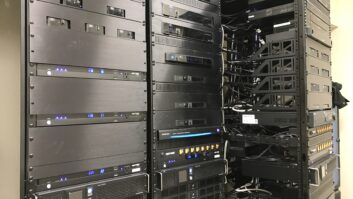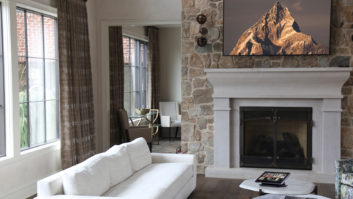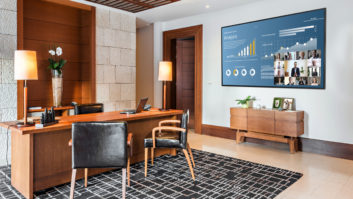This past October, technology research firm Parks Associates, in its “Home Security NUMBERS” report, revealed that more than 26 million U.S. broadband households will have professionally monitored security by 2021, with total annual revenue for that sector to exceed $14 billion by 2020. These figures underscore Parks Associates’ director of IOT strategy, Tom Kerber’s exhortation that, “Security providers must adapt to this trend and embrace the new IoT reality, which will expand the market for monitoring services and ultimately bring provider higher revenues.”
It’s no secret that security systems have been a gateway to more consumers adopting home automation systems in the past few years, a trend that Park Associates also confirms in its “Smart Home Devices: User Experience” research, which noted that among U.S. smart home device owners, 37 percent made this purchase to keep their home safe, while 29 percent wanted to monitor their home while away. But amid this forest of figures is the very real divide between DIY systems—experiencing a consumer surge thanks to big-box players like Amazon, Google, and the major cable communications companies—and professionally monitored systems that require homeowners to pay monthly fees and use equipment they often find troublesome. Caught in the crosstalk are residential systems integrators who currently have to make definitive decisions about how they remodel their businesses to tap into what is an expanding but also shifting market.

“As more and more IT and smart home products become available through big-box retailers and e-tailers, customer visibility and interest continues to grow,” said Chris Dean, security purchasing specialist for Volutone, a PowerHouse Alliance distributor member. “Customers tend to gravitate toward the newest and coolest products on the market—such as Ring, Nest, Google Home, and Amazon Alexa. These products are popular because they appeal to consumer’s desire for ease of use, and the fact that they can be controlled from their smartphone and in some cases, interact with other smart devices throughout the home.”
To stay in the game, Dean said that surveillance and security manufacturers have benefited from integrating with control systems popular in the bespoke integration channel, including RTI, URC, and Control4, which has allowed them to maintain their relevance and be part of a larger system that combines DIY, DIFM, and professionally installed products.
“The larger the ecosystem of products and services a dealer can offer their customers,” Dean said, “the more they are willing to work with a brand in order to cater to their customer’s specific needs.”
Model integration approaches for home security systems have seized on the “platform sell.” That is, making a security system just one component of a larger control system. The practicalities of this are both obvious and less so (think: the security of monitored systems). For an integration firm like Georgia-based EMC Security + Technology, whose target audience is the production builder market, staying abreast with security market developments is easier because builders tend to have a security-first mentality, an observation made by Kent Scott Dimon, the firm’s new construction and home technology channel manager.
“Their approach is to start with the security system, and then the smart home aspects are layered on top of it,” Dimon said. “The builders we work with have seen the uptake of these security-based home automation systems grow exponentially. We’re seeing more things like fiber optic services, more sophisticated cabling, and the like become more common in these homes due to trends today like more people working from home, and people who need more IT-centric equipment. It’s almost become an expected amenity. The buyer of today assumes a certain level of technology in the house, and it actually starts with the security system. I think the security system is considered the “heating and air conditioning” of today, in that it has to be there. Even door manufacturers, for example, are constructing doors so that it will accommodate a hardwired or wireless door contact. The industry as a whole is embracing security.”
Conversely, but still effective as driven home by Park Associates’ research, is the smart home platform lead-in employed by Houston’s Advanced Electronics Systems, where the automation system is commander of the subsystems, including security (inclusive of door locks and security cameras), lighting control, HVAC, and AV.

“To us, a security system is just another subsystem,” said Matt Pyle, regional sales manager and partner at Advanced Electronics Systems. “I feel the security industry’s approach to the smart home has damaged its reputation. The security industry’s mentality toward the smart home is the monthly fee for everything and cheap product that will not last the life of the monitoring contract.”
While the security sector footholds might differ, one thing less actively discussed is the nervousness some residential system integrators have expressed in installing networked and monitored security systems. With hackers plaguing the emerging IoT market, there are genuine concerns around integration liabilities associated with networked devices, especially security systems.

“We put everything on a network today, including IP cameras, and one of the questions that now starts to come up is: “Well, if I’m putting a baby monitor camera, think drop cam, or whatever, on a network, does that network now need to be managed by a security company?” said Chris Smith of integration company, Cloud9 in New York. “This is a really fascinating question that’s particularly timely. Legislation is starting to roll through now and be discussed. From our perspective, we limit our participation to things that are not related to liability.”
Cloud9’s aversion to liability includes never installing fire systems, door access, or security systems, though the team will take an existing security system and allow end users to interface with it in some way.
“And the same thing is true for IP-based cameras,” Smith added. “We’re happy to put an IP-based camera in, but as soon as it’s being used as a monitoring system—and if that monitoring system were to be down for a period of time, and a piece of art were to go missing from a house, or somebody were to break in—we don’t want to participate in that part of it, for liability sake. So, we’re happy to put in the baby monitor version; we’re not happy to put in security version, even if it’s the exact same camera, on the exact same network. So, that’s kind of what’s happening in the industry.”
Securing the Project
For custom integrators actively pitching security systems—monitored or otherwise—the one hook that often seals the deal is the smartphone. This is not earth-shattering news, but it remains a pivotal element in the acceleration of home control adoption and continues to play a central role in catching the attention of younger consumers who are more comfortable doing everything from a mobile device.
“Young people put it down to go to bed and wake up to it in the morning,” Dimon said. “Business people use it as a tool. The smartphone is today’s standard operating device, almost like oxygen. That’s because the desire to be interactive is 24/7. So, the first hook needs to be showing the customer how what you’re selling fits into that part of their lifestyle. Homebuilders are very savvy marketers in that they understand demographics and lifestyles. It’s not just ‘location, location, location’ anymore. Now it’s ‘technology, infrastructure, and capabilities.’”
EMC Security + Technology recently partnered with a homebuilder with 20 active subdivisions in Atlanta, with one featuring a design for sophisticated users. Dimon’s team started the integration process with a standard security and structured wiring system that included phone, voice, and data cabling, as well as a standard automation package that included a Honeywell VISTA system that connects the security system, door lock set, Honeywell thermostat, and lighting control system.
“This illustrates that one of the most significant buying motivations is a technologically advanced house,” Dimon said. “We also work with one of Atlanta’s largest family-owned production builders. They offer a very similar package because they understand the buyers are very IT-centric people. These are people who are location independent because they work from home and travel a lot. They need technology that will act as a tether to their homes when they’re away to retrieve information, as well as control, adjust, and allow access to the house. Honeywell is our go-to technology in many of these cases. We’re doing 1,500 new construction homes this year. Each one gets a security system, and a large percentage will get the automation package through the VISTA, or Tuxedo Touch.”
Volutone’s integration team also plays up the central idea of security systems to begin with: peace of mind. And, while DIY products may be grabbing the headlines of late, Dean believes that monitored security solutions resonate with customers in the long run, especially those tethered to their smartphones. “Security companies that also offer end-user monitoring access via a smartphone app have seen tremendous success,” Dean noted, “because that feature allows the customer to keep an eye on their home, pets, and family when they are at work or away from home.”
One of Volutone’s customers in Simi Valley, CA, is Grey Long, president of Digital Media Solutions, who recently integrated a smart home security system for a client who did not want a visible keypad in the house. Long’s team designed a system around a Control4 System and DSC security with a keypad that was hidden in a closet. Rather that run a standard security system with intrusion alerts, the DMS team programmed the system with a number of customized scenes triggered by the security system, including a “welcome home” scene that activates the front hall lights and turns on the customer’s favorite playlist, and a “goodbye” scene that automatically shuts off the lights and music inside the home and turns on the front porch light.
“The challenge that Grey and his team were faced with was adding a number of peripherals (such as lights, the AV system, etc.) to the system and programming them all to work not only in sync with one another, but also in tandem with the security system, plus the Control4 system as a whole,” Dean explained. “With customized actions—such as if a glass window breaks, the system does one thing, versus if the front door contacts are triggered, the system does another—there are many components and commands involved in programming the system to suit the specific needs of the customer. The reason why Grey chose to use a DSC security system is because it integrates seamlessly with Control4, reducing the installer’s programming time.”
Securing the Future
Positive projections for the security systems industry’s growth are encouraging, especially after the stagnation of the past few years as both consumers and integrators watch to see the influence of IoT on smart home development. With prognosticators heralding a new age for the sector fueled by a younger consumer base enthusiastic about lifestyle technology, it’s up to custom integrators to step up, as they have done in the home control channel, and be the experts they have always been on this front. Of course, this battle cry of sorts doesn’t come without some hesitation—as Chris Smith outlined in his company’s refusal to run full tilt into possible litigation quagmires—but optimism might be found in restructuring the traditional security system business model into one that brings both integrators and end users peace of mind.
“One thing that might improve acceptance and integration may not even necessarily be a technology feature,” Dimon said. “We think there will be a greater need for licensed, reputable services to intervene with permission from the homeowner to surveil, monitor, and provide access to the home—almost like a concierge home service. Picture this: you’re at work and your service calls to tell you the power went out at your home, they’ve used remote diagnostics to pinpoint the problem, and oh, by the way, would Tuesday at 4 p.m. work for a technical to come out and fix the problem?”
Pyle of Advanced Electronics Systems is would like the middleman to disappear altogether, hoping that we all “let a security system be a good security system.” Reiterating his belief that the security systems industry is broken, Pyle added, “People will one day realize they don’t need to pay a monthly fee to a man in the middle in order to control their lights over the internet, or that relying upon the internet to record security camera footage is a very bad idea for numerous reasons.”
Still, as an industry that continues to reshape itself into a standard aspect of home buying in the U.S., Dean of Volutone would like to see more security systems companies embrace an open architecture that allows integration with automation companies.
“The smoother the integration, the more that dealers will be willing to install security and smart home systems together, providing more options for their customers,” he said. “Though, some systems already do this well. Thanks to forward-thinking security companies like DSC, 2GIG, and Qolsys, Volutone dealers have had tremendous success upselling customers from a security system to a broader smart home system. Oftentimes the customers don’t know what is possible until the dealer walks them through their options. Once they understand they can have a monitored security solution that can also tie into a smart thermostat, cameras, locks, lighting, AV system, and more, they are not only floored, but more often than not want it, despite the cost







